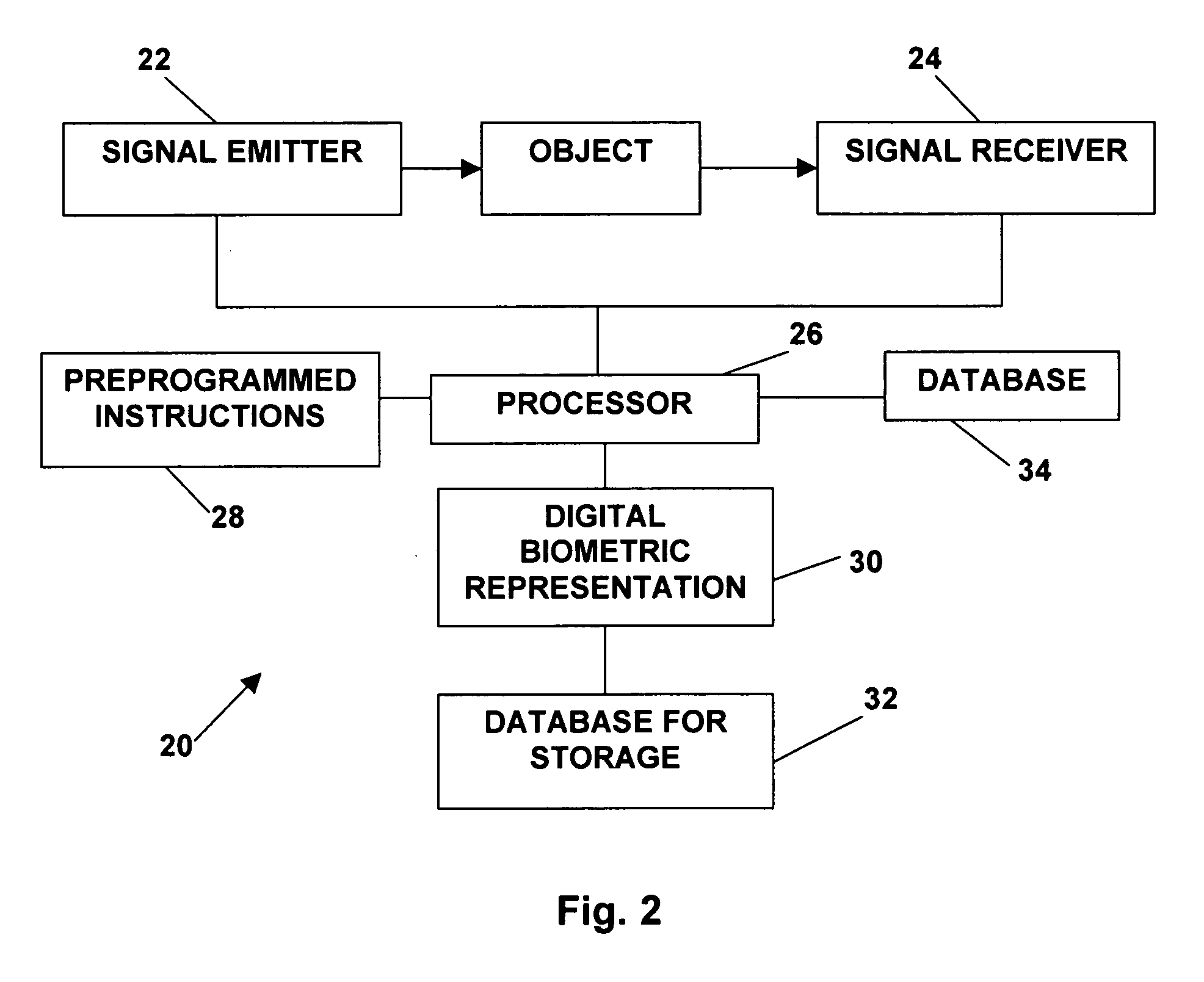3D Fingerprint and palm print data model and capture devices using multi structured lights and cameras
a fingerprint and data model technology, applied in the field of fingerprint authentication, can solve the problems of difficult use of current technologies, serious challenges, and inability to capture live or latent fingerprints, and achieve the effects of reducing fine features and/or worn friction ridges, facilitating use, and facilitating image capture and processing
- Summary
- Abstract
- Description
- Claims
- Application Information
AI Technical Summary
Benefits of technology
Problems solved by technology
Method used
Image
Examples
Embodiment Construction
[0016] The present invention relates to devices and methods for acquiring, processing and storing biometric information. The present invention is susceptible to embodiments of different forms. There are shown in the drawings, and herein will be described in detail, specific embodiments of the present invention with the understanding that the present disclosure is to be considered an exemplification of the principles of the invention, and is not intended to limit the invention to that illustrated and described herein.
[0017] By way of background, the conventional rolled-fingerprint originates from the criminal scene, where the biometric features are the lines of the ridge after a finger has been pressed onto a flat surface. In order to use the fingerprint as an identifying factor, an important feature of the rolled-fingerprint is that of the lines or ridges. The traditional inked method to obtain fingerprint is uses this factor and proper inking and rolling techniques will produce a ...
PUM
 Login to View More
Login to View More Abstract
Description
Claims
Application Information
 Login to View More
Login to View More - R&D
- Intellectual Property
- Life Sciences
- Materials
- Tech Scout
- Unparalleled Data Quality
- Higher Quality Content
- 60% Fewer Hallucinations
Browse by: Latest US Patents, China's latest patents, Technical Efficacy Thesaurus, Application Domain, Technology Topic, Popular Technical Reports.
© 2025 PatSnap. All rights reserved.Legal|Privacy policy|Modern Slavery Act Transparency Statement|Sitemap|About US| Contact US: help@patsnap.com



